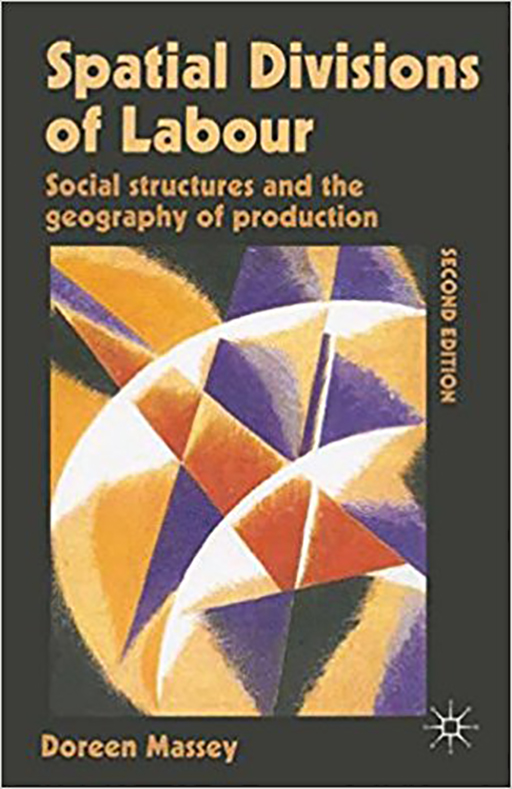2 How uneven development works out in practice
Rather than simply noting the existence of uneven development – the differences expressed in mapping exercises of one sort or another – what matters is to think about uneven development as a process. From this perspective it is important to recognise that uneven development is not just a settled outcome, but rather a continuing and dynamic process. It incorporates its own tensions, rather than following some necessary linear pattern. A region is never fixed or finalised. What matters are the dynamics of region-making, rather than the fixing of a ‘region’ as a specimen on the page (or even on a map).
So, for example, in Spatial Divisions of Labour Doreen Massey (1995) focused on places (like South Wales) that had been severely affected by economic decline and industrial restructuring, particularly the old heartlands of coal mining and heavy industry. But she did not stop there. Instead she reflected on the ways in which older industrial areas were reused and reworked to generate different ways of working as light industry replaced the old industries. The labour discipline and the various routines that underpinned the working of the old industries were translated into opportunities to generate profitable investment for new employers and businesses. The shift in employment patterns that she identified included an increase in part-time as well as full-time assembly work in light industrial units. As the older male dominated industries declined, more women found jobs in the new industries. In other words, uneven development is not simply a story of decline, but may be one of reshaping and redefinition.

The point here is not that the emergent divisions of labour identified by Doreen Massey are the only ones. It is, rather, to emphasise that uneven development is about much more than the generation (or reshaping) of inequality – even if that is one of its consequences. From one perspective, uneven development may generate new opportunities for investment and profitable production. And from another, it may provide a basis for forms of social solidarity and political action, whether in those areas suffering decline or in those where growth is taking place. It may, however, also work to transform some places as changing economic drivers in turn bring different ways of working and different ways of living.
Activity 2 Thinking about economic and social change in your area
Think of the area in which you live and make notes on the following questions in the box below.
- Can you identify any changes in the nature of the local economy that have taken place over the last twenty years or so? (You may have experienced them directly yourself or simply be aware of how the opportunities have shifted between generations.)
- As older industries have declined, have new ones replaced them – if so what form have those changes taken?
- How have local job markets changed and who has tended to benefit and who lose out?
Feedback
The Open University is based in Milton Keynes, and answering these questions here is a particular challenge. Milton Keynes is a new town on the edge of South East England. The main story of its development over the past twenty years is one of growth and expansion. The population has probably doubled over the period and is now around a quarter of a million. But it is important to remember that there is a longer history for some parts of today’s Milton Keynes. Until the 1980s, it had a large works dedicated to the construction and maintenance of railway carriages, as well as a significant presence in light engineering and food processing. Today the industries are very different, dominated by logistics (reflected in large warehouses close to the motorway) as well as financial and business services, alongside a very strong retail sector. There are also some high tech employers and, of course, The Open University is itself a major employer.
Meanwhile, the population mix of Milton Keynes has also changed. The town – often called a city because of its size – has become increasingly multicultural or cosmopolitan. Over the years between the censuses of 2001 and 2011 Milton Keynes’ black and minority ethnic population doubled from 13.2 % to 26.1 %. It now has a significant presence both of people who identified as black African in the census and of people born in EU accession countries, especially Poland (Milton Keynes Council, 2014). The local job market is a divided one, around the poles of highly skilled, white-collar employment and relatively low skilled employment (in warehousing and retail). Milton Keynes is generally understood to be one of the UK’s ‘fast growth cities’, and is often presented as a model to be followed elsewhere (Williams, 2016). Of course, how that is experienced by those who live there is a more complex and difficult question.
And no doubt your own experience will be quite different, although the area in which you live is also likely to have faced major changes over the past twenty years.
